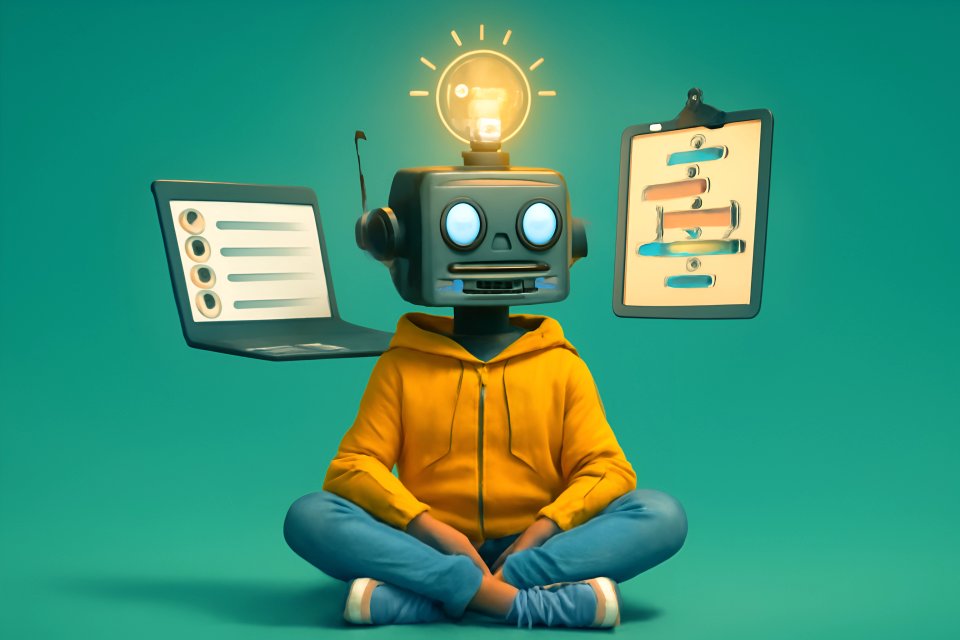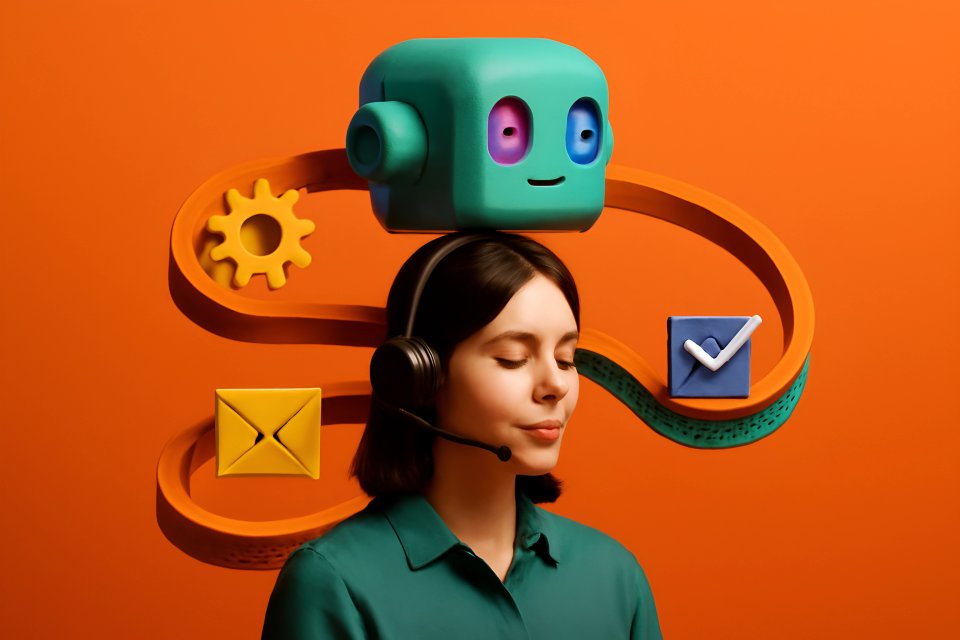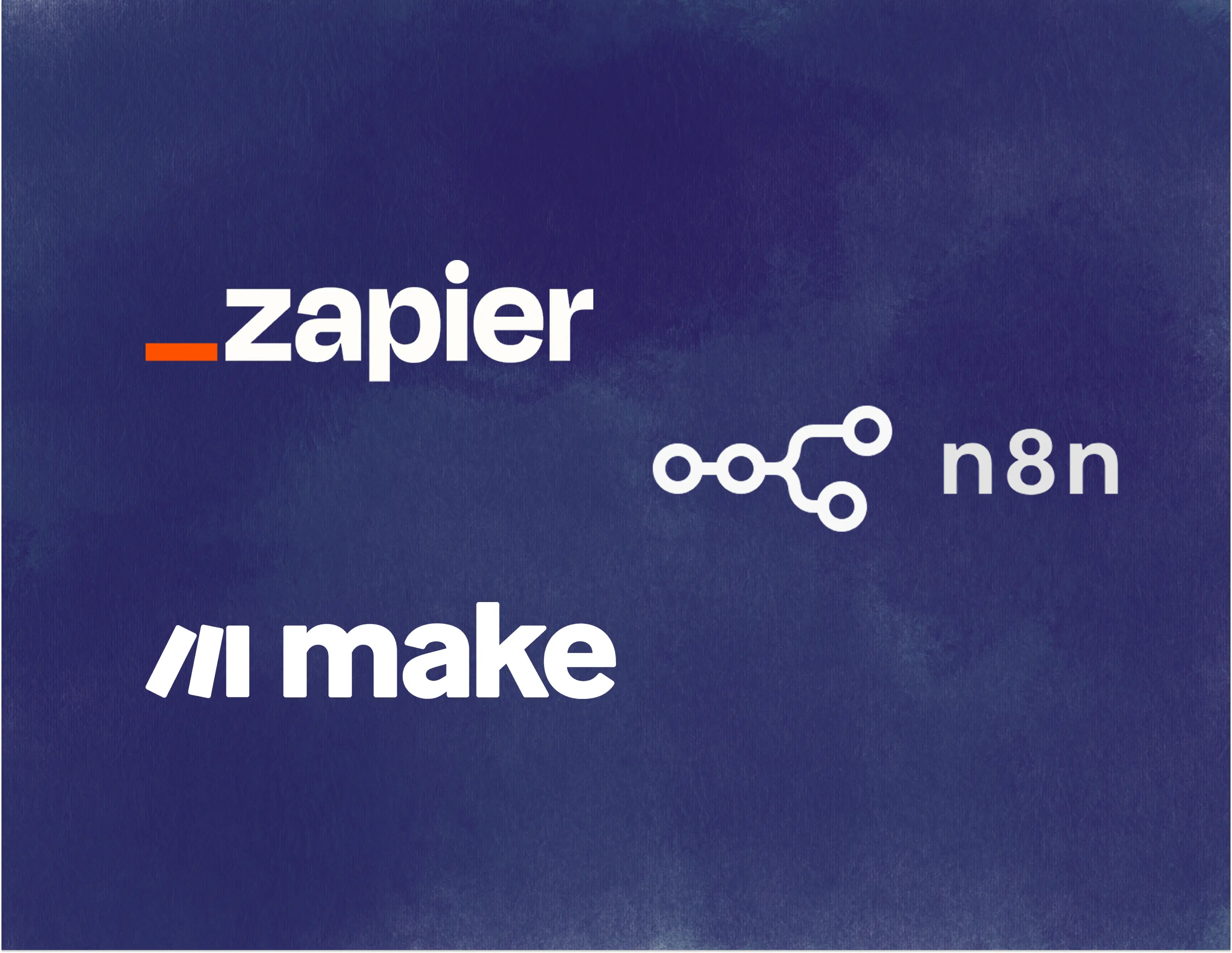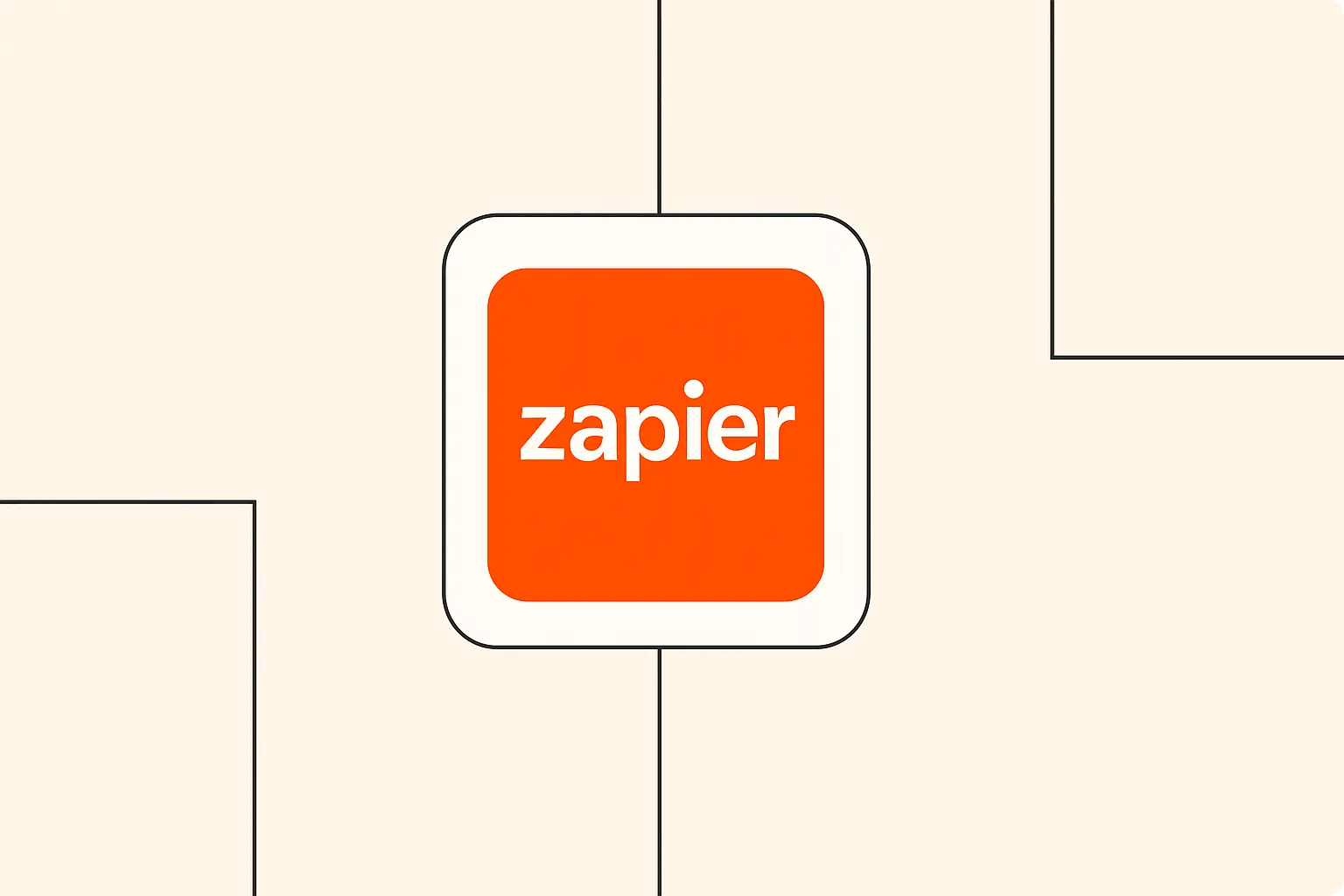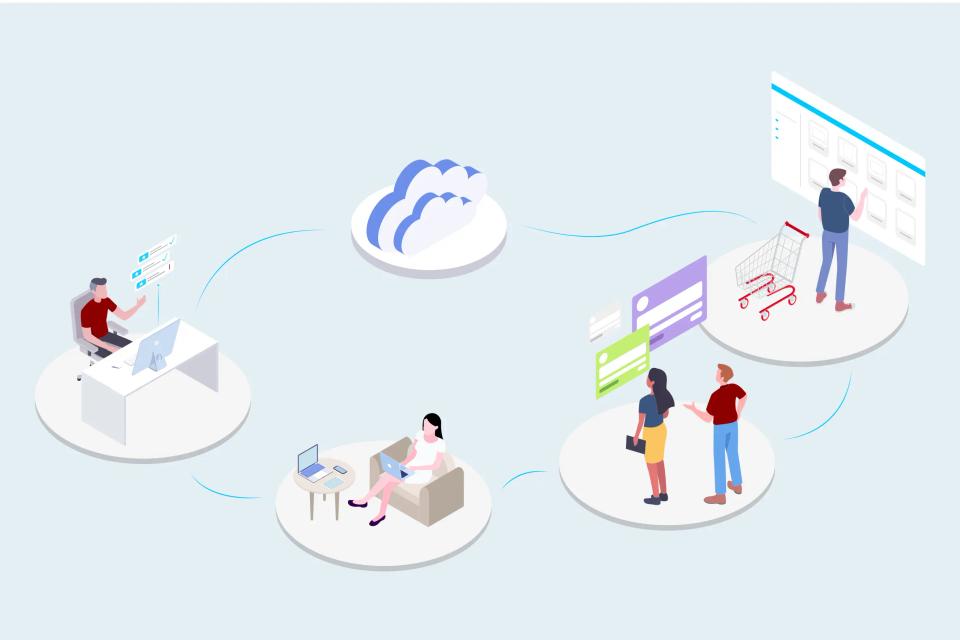
Think of no-code tools like building blocks for technology. Instead of needing to write complex computer language, you can use visual interfaces – dragging and dropping elements – to create powerful automations, even incorporating Artificial Intelligence! It's all about making sophisticated tech available to everyone, not just coding wizards.
Staying ahead of the curve with these automation trends isn't just about being fancy; it's becoming essential. These tools can seriously boost how efficiently your business runs and help you stay competitive in a fast-moving world. So, let's dive in together and explore the exciting future of no-code AI automation!
The Current State of No-Code AI Automation
Right now, the world of no-code AI is buzzing with activity. We have some fantastic platforms leading the charge, making it easier than ever to automate tasks without needing a developer. You've likely heard of tools like Zapier and Make, which act like digital glue, connecting different apps and services you already use.
These platforms allow you to build "if this, then that" style workflows. For example, you could automatically save email attachments to cloud storage or get notified in Slack when a customer fills out a form on your website. Many are now integrating AI features, allowing you to do things like summarize text, categorize customer feedback, or even draft email responses automatically.
While incredibly powerful, there are still some limitations. Complex, highly customized AI tasks might still require traditional coding, and sometimes integrating very niche applications can be tricky. However, market adoption is growing rapidly; Forbes highlights the rise of no-code AI as a key trend empowering businesses, showing just how mainstream these tools are becoming. Many businesses are realizing the potential to streamline operations without massive development costs.
Emerging Trends in No-Code AI Automation
The current tools are amazing, but the future looks even brighter! Developers are constantly innovating, making these platforms smarter and easier to use. Let's look at some key trends popping up.
Enhanced Natural Language Processing Integration
One of the most exciting areas is how these tools understand and use human language – that's Natural Language Processing, or NLP. Imagine telling your automation platform what you want it to do in plain English, like instructing a helpful assistant! We're seeing more conversational interfaces emerge, making the building process feel more natural.
Beyond just building, the AI's ability to process language is getting much better. Think about automatically analyzing customer reviews for sentiment (are they happy or frustrated?) or extracting key information from long documents without you reading every word. According to insights from platforms like Built In on no-code AI, this advanced text analysis is becoming a core feature.
We're also seeing big improvements in multilingual support. This means AI tools can understand and process text in various languages, opening up automation possibilities for global businesses or those serving diverse communities. This breaks down communication barriers within automated workflows.
Visual Programming Advancements
Remember those building blocks I mentioned? The way we connect them visually is also getting a makeover. Developers are focused on making drag-and-drop interfaces even more intuitive, so building complex workflows feels less like programming and more like drawing a flowchart.
A fantastic development is real-time workflow visualization. As you build your automation, you can see exactly how data will flow and how different steps connect, making it easier to understand and troubleshoot. It’s like having a live map of your automation process.
Debugging – finding and fixing errors – is also becoming simpler. Enhanced visual cues and clearer error messages mean you won't get stuck as easily if something isn't working quite right. This lowers the barrier for beginners who might be intimidated by technical glitches.
Cross-Platform Integration Evolution
No-code tools are powerful because they connect different apps, and this connectivity is constantly expanding. We're seeing a huge increase in the number of apps and services these platforms can talk to, thanks to more readily available APIs (Application Programming Interfaces – think of them as messengers between apps).
To make connections even smoother, universal connectors and adaptors are being developed. These act like master keys, allowing platforms to integrate with a wider range of software without needing a specific, custom-built connection for every single one. This trend is central to the no-code revolution described by Make.
Improved data synchronization is another key evolution. Ensuring that information updated in one connected app is accurately reflected in another, almost instantly, is crucial for reliable automation. This seamless data flow prevents errors and keeps your automated processes running smoothly.
Key Predictions for the Next 3-5 Years
Looking ahead, the pace of change isn't slowing down! Based on current trends, we can make some exciting predictions about where no-code AI automation is heading. It's all about making AI even more powerful and accessible.
Democratization of AI Capabilities
The biggest shift I foresee is the true democratization of AI. This means putting advanced AI capabilities into the hands of non-technical users within businesses. Imagine accessing machine learning tools directly within your no-code platform without needing a data science degree!
We'll likely see simplified ways to train custom AI models. You might be able to teach an AI to recognize specific types of customer inquiries or categorize products based on your unique business needs, all through a user-friendly interface. This aligns with the empowerment theme discussed in the Forbes article on no-code AI.
Furthermore, expect more automated optimization features. The platforms themselves might suggest ways to improve your workflows or automatically fine-tune AI parameters for better performance, taking the guesswork out of getting the best results.
Industry-Specific Solutions
As no-code AI matures, we'll see a move towards more specialized solutions tailored for specific industries. Instead of just general building blocks, platforms will offer pre-built templates designed for sectors like healthcare, finance, retail, or real estate.
These templates could include ready-made workflows for common industry tasks, like patient onboarding in healthcare or lead management in real estate. This drastically speeds up the implementation process for businesses. You can find examples of how different roles use these tools in resources like Zapier's blog.
Crucially, these industry solutions will likely come with built-in compliance and security features relevant to that sector. This addresses major hurdles like HIPAA compliance in healthcare or financial regulations, making adoption easier for businesses in regulated fields.
Enhanced Automation Intelligence
The automations themselves are set to become much smarter. We're moving towards self-optimizing workflows that can analyze their own performance and make adjustments automatically to become more efficient or reliable over time.
Imagine your automation platform proactively suggesting new automations based on how you work or identifying bottlenecks you weren't even aware of. This kind of predictive suggestion capability will make these tools feel more like intelligent partners than just passive tools.
Advanced error handling and recovery will also become standard. If an automation runs into an unexpected issue, future systems will be better equipped to diagnose the problem, attempt self-correction, or provide much clearer guidance on how you can fix it, minimizing disruptions.
Impact on Business Operations
So, what does all this mean for how businesses actually work day-to-day? The impact is potentially huge, touching everything from how much work gets done to the very roles people play.
Productivity and Efficiency
The most immediate impact is often a significant boost in productivity and efficiency. Automating repetitive, time-consuming tasks frees up your team to focus on more strategic, creative, or customer-facing activities. This directly translates into potential cost reductions, as you're getting more done with the same resources.
Think about the hours saved by automating report generation, data entry, or social media posting. This time-saving capability is a major driver of adoption, allowing teams to reclaim valuable hours each week. As highlighted by various sources like Built In, efficiency gains are a primary benefit.
Ultimately, this leads to better resource optimization. You can allocate your team's skills and budget more effectively when routine tasks are handled automatically, allowing you to invest in growth areas.
Workforce Transformation
The rise of automation inevitably leads to changes in the workforce. While some fear job displacement, I see it more as a transformation, creating new roles and requiring new skills. There will be increased demand for people who can design, manage, and optimize these automations – sometimes called "citizen developers."
This means training and adaptation are key. Businesses need to invest in upskilling their employees, helping them learn how to work with automation tools rather than being replaced by them. Encouraging a mindset of lifelong learning will be crucial.
The future is likely one of human-automation collaboration. AI handles the repetitive parts, while humans oversee the process, handle exceptions, and focus on tasks requiring empathy, creativity, and complex problem-solving. It's about augmenting human capabilities, not replacing them entirely.
Competitive Advantages
Businesses that effectively leverage no-code AI automation can gain significant competitive advantages. Being able to automate processes allows for much faster market responsiveness – you can adapt to changing customer needs or market conditions more quickly.
Automation also frees up resources and fosters a culture where experimentation is easier, potentially boosting innovation capabilities. Teams can test new ideas or service offerings more rapidly when the underlying processes can be quickly automated and adjusted. This agility is a key theme in discussions around the no-code revolution.
Ultimately, this can lead to enhanced customer experiences. Faster response times, more personalized interactions (powered by AI insights), and smoother service delivery all contribute to happier, more loyal customers.
Challenges and Considerations
Now, it's not all seamless magic! While the potential is huge, adopting no-code AI automation does come with challenges that businesses need to consider carefully. Being aware of these hurdles is the first step to overcoming them.
One major area is security and privacy. When you connect different applications and automate data flows, you need robust security measures to protect sensitive information. Ensuring the no-code platforms you use have strong security protocols and comply with data privacy regulations (like GDPR or CCPA) is absolutely essential.
Integration complexity can still be a hurdle. While platforms are getting better, connecting older legacy systems or highly specialized software might require workarounds or custom development, slightly defeating the "no-code" purpose. Thoroughly vetting platform compatibility with your existing tech stack is important.
Don't underestimate the need for training and the potential for adoption hurdles. Even "easy-to-use" tools require learning. Teams need time and support to understand how to build effective and reliable automations, and some employees might be resistant to changing their established workflows.
Finally, there are cost considerations. While often cheaper than custom development, no-code platforms typically operate on subscription models. Costs can increase based on the number of users, the complexity of automations, or the volume of tasks run, so budgeting appropriately is key.
Preparing for the Future
Knowing the trends and challenges, how can your business get ready to embrace the future of no-code AI automation effectively? It starts with thoughtful planning and adopting some best practices.
Strategic Planning
First, take a step back and conduct an assessment of your automation needs. Identify the processes within your business that are repetitive, time-consuming, or prone to human error – these are often the best candidates for automation. Think about where AI could add value, like analyzing data or personalizing communications.
Next, establish clear platform selection criteria. Consider factors like ease of use, the specific integrations you need (check compatibility with tools like those discussed by Zapier or Make), security features, scalability, and pricing models. Don't just pick the most popular tool; pick the right tool for your needs.
Finally, develop an implementation roadmap. Start small with a pilot project to gain experience and demonstrate value. Plan how you will roll out automation more broadly, including who will be responsible, how you will provide training, and how you will measure success.
Best Practices
Preparing your team is crucial. Communicate the benefits of automation clearly and address any concerns they might have. Provide adequate training resources and ongoing support to build confidence and encourage adoption.
Implement robust risk management strategies. This includes having clear governance policies for who can build automations, establishing security protocols, and having backup plans in case an automation fails. Regularly review and audit your automations.
Continuously monitor the performance of your automations. Track key metrics like time saved, error rates reduced, and costs impacted. Use this data to identify areas for improvement and ensure your automations are delivering the expected value.
Conclusion
Wow, we've covered a lot! From the powerful tools available today to the exciting future driven by smarter AI, intuitive design, and broader integration, the world of no-code AI automation is evolving incredibly fast. As we've seen, trends like enhanced NLP, better visual programming, and the democratization of AI are set to make these tools even more impactful for businesses like yours.
The potential benefits – increased productivity, workforce transformation towards higher-value tasks, and significant competitive advantages – are compelling. While challenges around security, integration, and adoption exist, they can be navigated with careful planning and a commitment to training and best practices. The key takeaway, as echoed by experts at Forbes and Built In, is empowerment.
My advice? Start exploring! Identify one small, repetitive task in your workflow and see if you can automate it using a no-code tool. Don't be afraid to experiment – that first small win can build incredible momentum. The future of business involves working smarter, not just harder, and no-code AI automation is a fantastic way to start doing just that.
Additional Resources
To continue your learning journey, here are some great resources:
- Explore No-Code AI Platforms:
- Industry Insights:
- Internal Link Example (Conceptual - would link to another blog post on your site):
- Check out our beginner's guide: Getting Started with Your First No-Code Automation (Note: Replace # with actual internal link)



